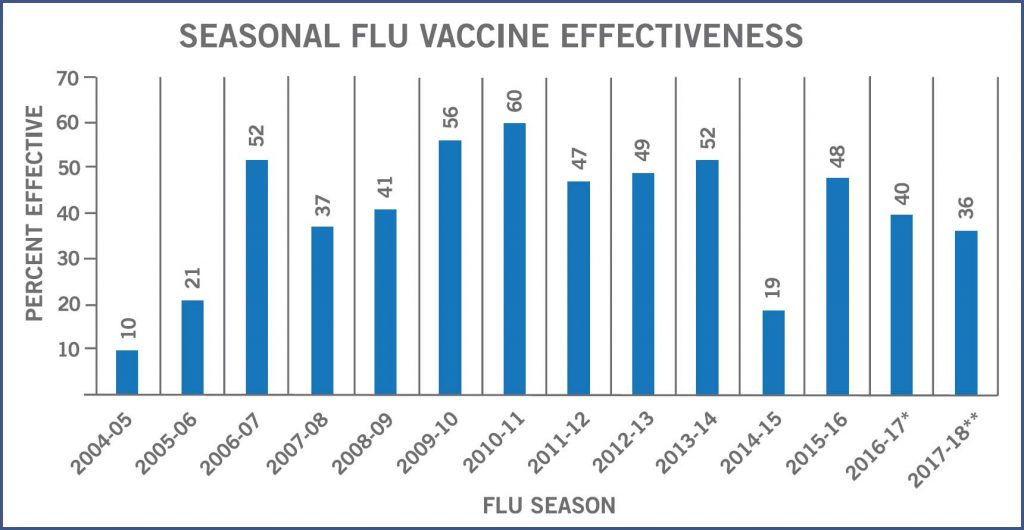by Ivan | Nov 26, 2019 | Healthy Aging, Patient News, Wellness

Life’s Happiness Continuum
Is there a predetermined peak age for happiness, before which our normal outlook is gloomy and melancholy and after which we slump back into these non-euphoric ways? When Are the Best Years of Our Lives?
Studies Show Two Stages of Life Happiness
Like trying to define why some people are born to be joyful and others to play the role of curmudgeon, this issue has long intrigued psychological and social science researchers. While no singular conclusion has been reached, there are a number of compelling hypotheses…and you may be pleasantly surprised to learn that a number of studies suggest a U-shaped happiness curve with peaks for young and old, giving us not one but two stages of life to savor. Mid-life can be stressful, full of the challenges and demands of raising a family and sustaining a career, but according to some experts, there is indeed a light at the end of the tunnel.
The Economist’s international survey of happiness gathered data from America’s General Social Survey, Eurobarometer and Gallup finding an upward trajectory of happiness until age 30, a downward trend into midlife, with the lowest point reached at age 46, and up to higher levels again after the 50’s. Jonathan Rauch, a senior fellow at the Brookings Institution and author of the 2018 book, The Happiness Curve, says although its effects vary between individuals, there appears to be a subtle but insistent tug that makes happiness more difficult to achieve in midlife and then reverses direction when we least expect it.
Other research supports this finding, including a University of Chicago retrospective study of 28,000 Americans over a 32-year period which showed older age groups were consistently the happiest. Interestingly, Dr. Dilip Jeste, director of the UC San Diego Center for Healthy Aging, describes it not as a curve, but more of a linear improvement in mental health that occurs even as physical and cognitive function declines.
Might Happiness in Women Peak Between the Ages of 50-70?
In particular, today’s women may find some of their sweetest times between ages 50 and 70, according to an in-depth lifestyle study spanning three decades conducted by the TrendSight Group. The take-away for younger generations: “Aging isn’t a dirty word, with it can come incredible confidence, strength and freedom,” says study author Marti Barletta. Even better, a full 59% of women ages 50 to 70 felt their greatest achievements were still ahead of them.
Happiness may Increase with Age
Experts theorize a number of reasons that happiness may increase with age, including increased wisdom or psychological intelligence in handling challenges, fewer aspirations and expectations of self, greater appreciation for life, living in the moment with less worry about the future, greater ability to regulate emotions and less worry about pleasing everyone all the time. Stanford psychologist Laura Carstensen’s Socioemotional Selectivity Theory, which is grounded in the unique human ability to monitor time, suggests that relative to younger people, older adults focus more on positive than negative information and prioritize emotionally meaningful activities – notably, deepening close relationships – over those related to individual achievement and exploration.
Recent findings from the Harvard Study of Adult Development, one of the world’s longest studies of adult life, begun in 1938, also point to the vital role of relationships in happiness at older ages. According to the research, these ties protect people from life’s discontents, help to delay mental and physical decline, and are better predictors of long and happy lives than social class, IQ or genes. Dr. Robert Waldinger, study director and psychiatrist at Massachusetts General Hospital, acknowledges that the research shows correlation, not necessarily causation. However, after following the subjects (including both Harvard graduates and inner-city residents) for many decades and comparing the state of their health and their relationships early on, he is confident that strong social bonds play a causal role in long-term well-being.
Perhaps 19th century journalist David Grayson had the best advice of all: “The other day a man asked me what I thought was the best time of life. ‘Why,’ I answered without a thought, ‘now.’”
The post When Are the Best Years of Our Lives? appeared first on Specialdocs Consultants.
by Ivan | Jul 9, 2019 | Patient News, Staying Active, Wellness

Wake-up Call: Fighting Fatigue at Its Roots
Feel like you are fighting fatigue throughout the day, the joy in life slowly diminishing and your active lifestyle becoming a distant memory? Are these ordinary signs of aging?
No, no and no!
Feeling tired all the time is not a normal part of the aging process. Instead, it can point to the need for a better night’s sleep, stress or an underlying illness, or be the result of a mix of common medications. Or it may be a combination of all these things. Identifying the possible sources of your fatigue is the most important step in reenergizing your lifestyle.
Medical: Visit your physician to rule out these frequently seen causes of tiredness.
Emotional health: Low-grade depression, anxiety or chronic stress can sap energy.
Anemia: This condition occurs when your blood has too few red blood cells or those cells have too little hemoglobin, a protein that transports oxygen through the bloodstream. If untreated, anemia results in a drop in energy levels.
Heart disease: When the heart pumps blood less efficiently, it can lead to fluid in the lungs, causing shortness of breath and reducing the oxygen supply to heart and lungs.
Hypothyroidism : An underactive thyroid gland can cause fatigue – along with other symptoms, such as weight gain, weakness, dry skin, feeling cold and constipation.
Medications : Many medicines can cause fatigue, including blood pressure drugs, antidepressants, anti-anxiety drugs and antihistamines.
Lifestyle Habits
Sleep: Quality, quantity and environment matter greatly in ensuring a healthy sleep, but these factors are surprisingly misconstrued. According to NYU School of Medicine, dispelling these widely held beliefs is key:
- Myth: “Alcohol before bed is good for sleeping.” A nightcap before bed may help you fall asleep but will dramatically reduce the quality of sleep by disrupting the REM (rapid eye movement) stage all night, and you’ll wake unrefreshed.
- Myth: “Many adults need only five hours of sleep or less, especially as they get older.” The reality is everyone needs to get enough sleep to wake up feeling refreshed. The average is seven to eight hours nightly to allow the body to progress through four phases of restorative sleep, including deep sleep cycles of REM and delta waves sleep, which are important for generating neurons, repairing muscle and restoring the immune system.
- Myth: “Watching TV in bed before sleep is a good way to relax.” Actually, turning off the TV and putting away electronic devices at least two hours before bedtime is recommended, as the blue light produced affects the release of melatonin, the sleep hormone, and will delay slumber.
- Myth: “If I wake up in the middle of the night, it is best to lie in bed until I fall back asleep.” Tossing and turning for more than 20 minutes is not helpful; instead, change rooms and engage in something mindless, like folding socks. Do not watch TV or look at electronic devices, as this wakes up your brain.
- Myth: “Snoring is a common, harmless problem.” Snoring can be a sign of sleep apnea, a disorder characterized by decreased or complete lack of airflow throughout the night. Over time, this can increase the risk of cardiovascular disease if untreated.
- Myth: “Falling asleep anywhere, anytime is the sign of a good sleeper.” It’s just the opposite, indicating a sleep “debt” from insufficient rest or a sleep disorder such as narcolepsy or sleep apnea.
Under- or over-activity: Sedentary days and nights can cause loss of muscle mass and flexibility and make even moderately intense activities seem exhausting. However, exercising at a very high intensity can also cause fatigue.
An Infusion of Energy for Chronic Fatigue Research

Far beyond ordinary tiredness is the profound fatigue known as myalgic encephalomyelitis/ chronic fatigue syndrome (ME/CFS), which has puzzled and frustrated medical professionals for decades. No cure or approved treatment is available to its 2.5 million sufferers, only a management of symptoms worsened by any type of physical, cognitive or emotional effort. But a sea change is underway. It began in 2015 with a new name recommendation by the Institute of Medicine (IOM): Systemic Exertion Intolerance Disease (SEID). Noting that the term chronic fatigue syndrome can trivialize the seriousness of the condition and that “ME” is inappropriate because neither muscle pain nor brain inflammation has proven to be a symptom, the IOM panel stated: “SEID captures a central characteristic of this disease – that exertion of any sort can adversely affect patients in many organ systems and in many aspects of their lives.”
Even more promising is the significant investment in research announced by the National Institutes of Health (NIH). Up to $36 million over five years has been granted to shine a brighter light on the origins and progression of chronic fatigue and ultimately to help develop diagnostic markers and effective treatments for fighting fatigue.
Did You Know?
58% of older adults sleep less than seven hours a night.
80% of people age 55 and over report unintentionally falling asleep at least once during the day within the last month.
Source: Centers for Disease Control and Prevention
The post Fighting Fatigue appeared first on Specialdocs Consultants.
by Ivan | Jan 11, 2019 | Industry Insights, Patient News, Wellness

Why Today’s Health News Often Becomes Tomorrow’s Retractions
We’ve all seen it played out hundreds of times, as a drug, food or habit is trumpeted as the way to lower the risk of cancer or heart disease only to be walked back the next month in another study. The reasons can be diverse, including a flawed hypothesis, bad data or misleading conclusions, but at the center is the study design itself. A longitudinal trial may yield very different findings from an observational one, while the gold standard – a randomized controlled trial (RCT) – can be extremely costly and difficult to design. The resulting patchwork of research requires professional analysis and a wait-and-see approach until confirmation is received via follow-up studies. We share some expert insights to help you view new health studies with both a healthy skepticism and the realization that some of the most important medical breakthroughs of recent years have been discovered in just this way.
Fast Facts on Health Studies
1,400
Number of scientific papers retracted each year
Sources: Vaccine Journal August 2018, Centers for Disease Control, Harvard Health
50%
Percentage of scientific studies confirmed in follow-up studies
Source: Healthy Aging Project, University of Colorado, Boulder
Researchers agree that a randomized, controlled trial is the best way to learn about the world. In a drug study, for instance, a population is randomly divided into groups who receive the drug and those who don’t. If properly controlled and designed, any difference in outcomes between the groups can be measured and credibly attributed to the effects of the treatment. The methodology is highly valued in evidence-based medicine, proving that associations are causal, and not just by chance. The approach has powerful real-world applications, as seen in the Women’s Health Initiative (WHI), one of the nation’s largest-ever health projects.
Begun in 1993, with more than 161,000 women enrolled, the randomized, controlled clinical trial was designed to test the efficacy of long-term hormone therapy in preventing heart disease, hip fractures and other diseases in post-menopausal women over 60 years old on average. Previous observational studies had strongly suggested the preventive benefits of hormone therapy, and it was routinely recommended for women years after menopause. What happened next was stunning.
In 2002, the trial was halted three years earlier than planned as evidence mounted that the estrogen plus progestin therapy significantly raised a woman’s chances of developing cardiovascular disease, stroke and breast cancer. Millions of women stopped taking hormone therapy, and the trial has since been credited with reducing the incidence of breast cancer by 15,000-20,000 cases each year since the results were made public. Numerous follow-up studies were conducted to dig deeper into the surprising data, and while they showed that hormone therapy may still be reasonable short-term to manage menopausal symptoms in younger women, it is no longer routinely recommended years after menopause to prevent chronic disease in women.
Similarly, Vitamin E supplements, once thought to reduce risk of heart disease, were found to not have beneficial properties and actually may increase the risk of heart disease in higher doses. Consequently, the American Heart Association now advises that the best source of Vitamin E is foods, not supplements.
The biggest takeaway from both initiatives: the critical need for randomized, controlled trials to prove that associations between an intervention and a disease are causally related.
Nutrition health studies have also come under increased scrutiny, especially with the recent revelation of erroneous data published by high-profile researcher Dr. Brian Wansink, founder of the Food and Brand Lab at Cornell University. Numerous papers have been retracted as the lab’s propensity for data dredging – running exhaustive analyses on data sets to cherry pick interesting and media-friendly findings – came to light. This practice, seen somewhat frequently in food and nutrition research, may be part of why contradictory headlines seem to be the norm.
As the adage goes, data can be tortured until it says what the researcher wants to hear. That’s why your physician will always be the best source for making sense of the tremendous amount of health data released each day…so please ask!
Testing by Design
The most commonly used research models include:
Randomized controlled trial (RCT): carefully planned experiments like the WHI that introduce a treatment or exposure to study its effect on real patients; includes methodologies that reduce the potential for bias and allow for comparison between intervention groups and control groups.
Observational studies: researchers observe the effect of a risk factor, diagnostic test, treatment or other intervention without trying to change who is or isn’t exposed to it. Includes cohort studies, which compare any group of people linked in some way (e.g. by birth year); and longitudinal studies in which data is gathered for the same subjects repeatedly over years or even decades. An example is the Framingham Heart Study, now in its third generation, which has provided most of our current consensus regarding the effects of diet, exercise and medications on heart disease.
Case control study: compares exposure of people with an existing health problem to a control group without the issue, seeking to identify factors or exposures associated with the illness. This is less reliable than RCTs or observational studies because causality is not proven by a statistical relationship.
Meta-analysis: a thorough examination of numerous valid studies on a topic, which uses statistical methodology to combine and report the results of multiple studies as one large study. This is cost-effective but not as accurate as RCTs as the individual studies were not designed identically.
The post Health Studies: Expert Insight appeared first on Specialdocs Consultants.
by Specialdocs Consultants, LLC | Sep 25, 2018 | Patient News, Wellness

Your Best Shot at a Flu-Free Winter
Last year’s flu season was severe in most parts of the country and left many wondering why the flu vaccine hadn’t performed more effectively. However, it remains our best line of defense for averting and lessening the severity of this common but potentially deadly illness. Below we clear up some of the most common misconceptions about the flu vaccine…and continue to strongly recommend that you make sure to get your shot of prevention this fall.
Myth: I can get the flu from a flu shot.
A flu shot will not give you the flu. The viral strains in injectable influenza vaccine are inactive and biologically unable to cause illness. The one exception is the vaccine administered in nose spray form.
Myth: The vaccine didn’t work last year, so it must be losing potency.
The amount of protection provided by flu vaccines varies by influenza virus type, and how well matched vaccine viruses are to the circulating flu viruses. Last year’s results, while lower than average, still meant that the risk of getting sick from flu was reduced by a third. This year, both types of vaccines, trivalent (protection against influenza A H1N1 and H3N2 viruses and one type of influenza B virus) and quadrivalent (four component protection to protect against two types of B viruses), have been modified to better anticipate the season’s circulating flu viruses.
Myth: The flu vaccine will also prevent other viruses.
Flu vaccines do not protect against infection and illness caused by other viruses, such as rhinovirus (one cause of the common cold) and respiratory syncytial virus (RSV), despite their flu-like symptoms.
Myth: Flu vaccines are not appropriate for people over 65, who have weaker immune systems than younger people.
Although immune responses may be lower in the elderly, flu vaccine effectiveness has been similar in most flu seasons among older adults and those with chronic health conditions compared to younger, healthy adults. It’s also important to remember that people 65 and older are at increased risk of serious illness, hospitalization and death from the flu, making the flu vaccination especially important for this age group.
Myth: There are no flu vaccines just for people over 65.
There are two vaccines designed specifically to help enhance the effectiveness in adults older than 65. A high dose vaccine, containing four times the amount of antigen as the regular flu shot, and the adjuvanted flu vaccine, which creates a stronger immune response in the elderly.
Myth: The vaccine is less effective if received every year.
Multiple studies have shown that while immune responses to vaccination may be higher among people not previously vaccinated, those who are repeatedly vaccinated still have increased immune responses and are provided protection against the flu.
Myth: I should wait as late as possible to get immunized so it lasts throughout the season.
The CDC and Advisory Committee on Immunization Practices (ACIP) recommends that you get a flu vaccination in early fall to ensure you’re protected before flu season begins. However, as long as flu viruses are circulating, it’s not too late. Receiving a vaccination in December or January can still protect you because flu season often peaks after January and can last as late as May.
Myth: Getting sick with the flu is not all that serious.
In the U.S., 36,000 people die and more than 200,000 are hospitalized each year because of the flu. Children, the elderly and people with certain chronic conditions (heart disease, lung disease, asthma or diabetes) are at higher risk for complications such as pneumonia. For everyone, flu symptoms, including fever, headaches, cough, sore throat, nasal congestion, extreme tiredness and body aches, can disrupt work and social life for up to two weeks. The flu vaccine has proven effective in both preventing flu and in lessening the severity of symptoms if flu should occur, thereby reducing the risk of hospitalization and admission to the intensive care unit.
Did You Know?
Up to 60% – Decrease in the risk of flu during seasons when most circulating flu viruses are well matched to the flu vaccine. Put another way, in 2016-17, the vaccine prevented an estimated 5.29 million illnesses, 2.64 million medical visits and 84,700 hospitalizations associated with flu.
79% / 52% – Reduction in hospitalization for people with diabetes (79%) or chronic lung disease (52%) as a result of receiving the flu vaccine.
Sources: Vaccine Journal August 2018, Centers for Disease Control, Harvard Health

The post Staying Healthy During the Flu Season appeared first on Specialdocs Consultants.
by Specialdocs Consultants, LLC | Nov 20, 2017 | Healthy Aging, Patient News, Wellness

HealthWise presents an ongoing look at research that provides valuable insights to help today’s seniors – and the generations set to follow – create a vibrant next chapter. We have looked at strategies to keep the aging brain healthy and to protect the aging senses. In this issue, we get under your skin to learn how to keep it supple and resilient over the years. Wrinkles. Dry skin. Crow’s feet. Undereye circles. Sagging. Is there a way to stave off these very natural signs of aging? The answer is yes…and no. The thickening of the stratum corneum (the outer layer of the epidermis) which causes drier and flakier skin, is inevitable, as is the thinning of the dermis (underneath the epidermis), resulting in loss of elasticity. Genetics plays a pivotal role in determining when this starts to occur. However, there are a number of preventive steps you can take – some well-known and a few unexpected – which may help mature skin keep its youthful glow at 50, 60 and beyond.
Experts advise:
- Cut your sun exposure in half, at a minimum. UV exposure damages elastin and causes a loss of collagen, which results in sagging, fine lines and wrinkles. Think of sunscreen as the only truly magic elixir to improve skin appearance and health, and most importantly, prevent skin cancer…and choose one with SPF 30 or above and broad-spectrum UVA/UVB protection and use daily. In addition, wear a hat and UV-protective clothing outside, and try and avoid being in the sun when UV rays are strongest, between 11 am and 1 pm.
- Exercise. Another benefit to engaging in at least three hours of physical activity weekly is the positive impact on keeping skin younger, with the potential to reverse skin aging even for those
who start exercising late in life. New research showed that men and women over age 65 who exercised frequently had skin composition similar to 20 to 40-year-olds, with markedly thinner,
healthier stratum corneums and thicker dermis layers. Participants’ skin “looked like that of a much younger person, and all they had done differently was exercise.” Researchers surmised
that myokines, substances created by working muscles, may be responsible for the results, jump starting changes in cells far from the muscles themselves. They also noted that it was
unlikely that any pill or salve would replicate the skin benefits of a workout.
- Take short, lukewarm showers. Long, hot showers strip your skin of its natural oils.
- Protect in winter with a humidifier to add moisture to the home, and gloves to protect your hands from drying out.
- Focus on the right foods and beverages. Include omega-3 and omega-6 fatty acids in your diet, preferably from natural sources such as olive oil and fish, to help protect your skin’s
moisture barrier. Cut back on sugars which promote inflammation and can potentially damage normal production of dermal cells. Avoid high glycemic foods such as white bread and pretzels, which may also be responsible for prematurely aging skin. Drink plenty of water, but moderate alcohol intake – red wine can dilate blood vessels and contribute to rosacea, a skin irritation.
- Establish a smart night routine. Remove all makeup and wash your face before bed to eliminate the pollutants that break down your skin’s collagen all day. Then apply a retinoid followed
by a moisturizer.
- Get a good night’s sleep. During the deepest stage of sleep, your body releases growth hormones for cell repair, helping your skin rejuvenate on a daily basis.
- Minimize dark undereye circles with an extra nighttime pillow. As the delicate skin and muscle around the eyes weaken with time, the fat under the lower-lid skin can pool beneath your eye. Sleeping on two pillows can help prevent fluid accumulation.
If you want to explore other remedies, consider peels that exfoliate, and fractional resurfacing, a laser process that increases collagen production.
The post Aging Well, Aging Healthy…a continuing series appeared first on Specialdocs Consultants.
by Specialdocs Consultants, LLC | Nov 20, 2017 | Patient News, Wellness

“I think that you will all agree that we are living in most interesting times. I never remember myself a time in which our history was so full, in which day by day brought us new objects of interest, and, let me say also, new objects for anxiety.”
Was the above heard: 1. At a recent town hall meeting in Florida? 2. On the 2016 campaign trail? 3. During an 1898 address by a British statesman?
It may surprise you to learn that number 3 is the correct answer, and provides a welcome bit of perspective on the stress felt by every generation. While current times are considered stressful by a majority of adults, we also have better ways to identify, manage and prevent it than before.
Did You Know?
60-80% Percentage of visits to primary care physicians for stress-related conditions. Sources: APA, Mayo Clinic, Benson Henry Institute
Causes of stress
While stressors of American adults have remained fairly stable over the years, some are specific to the decade. As the American Psychological Association’s “2017 Stress in America” survey shows, the political climate and technology-centric world has caused an uptick in stress:
One nation, over stressed. 57% of Americans report the political climate is a significant source of stress; 66% say the same about the nation’s future. Stress about acts of terrorism was high at 59%, while worries over personal safety rose to 34%, the highest since the question was first asked in 2008.
Money, money, money. Other top causes of stress include money (61%), work (58%) and the economy (50%).
Media overload. Although nearly all adults own at least one electronic device, and more than 86% check emails, text or social media accounts daily, those who do so constantly report higher stress levels.
How to cope: For decades, stress-related issues have been recognized as the leading cause of visits to a primary care physician. Stress-relieving techniques continue to evolve:
Eat, pray, love. Exercise and going online are frequently used to manage stress. Women, how- ever, also reported spending time with friends or family, reading, engaging in prayer or eating as their primary methods of relieving stress.
Unplug. Interestingly, while 65% of Americans agree that periodically disconnecting is important for mental health, only 21% actually report doing so. Some techniques that work include no cell phones at the dinner table or while with friends, periodic digital detoxes, watching less tv, and turning off notifications for social media apps.
Trigger your relaxation response. Based on Dr. Herbert Benson’s 1974 discovery of an opposite state to the fight-or-flight response, the relaxation response puts the body in a state of deep rest. Techniques include mindful meditation, repetitive prayer, focused breathing, progressive muscle relaxation, tai chi and yoga. Studies have shown significant short-term impact on stress symptoms, as well as profound long-term improvements. Immediate reductions in blood pressure, heart and breathing rate helps manage periods of acute stress. If practiced regularly, the relaxation response can also help decrease inflammation and stress hormone levels and improve insulin activity and gastrointestinal issues.
Types of stress
Acute stress, the most common form, is experienced by virtually everyone at some point. Arising from the pressures of current conditions, and anticipated ones in the near future, acute stress can be exciting, even motivating, but too much is simply exhausting.
Symptoms: Emotional distress, such as anger, irritability, anxiety or depression; muscular problems including tension headache, back or jaw pain; stomach and bowel problems; temporary elevation in blood pressure; rapid heartbeat; sweaty palms, heart palpitations; dizziness; shortness of breath.
Solutions: This stress is short-term and highly manageable. Techniques to slow your breathing and focus your attention, as well as walking outdoors or participating in sports, can all help dispel it.
Episodic acute stress is a fact of life for those people who are always rushed, late and dealing with a plethora of self-inflicted demands and pressures. This category includes “Type A” personalities – aggressive, impatient, short-tempered. Another type of person who feels episodic acute stress is the worrier – those with a pessimistic world view and a tendency to catastrophize every situation; likely to also feel anxious and depressed.
Symptoms: Persistent tension headaches, insomnia, migraines, hypertension, chest pain and heart disease.
Solutions: Lifestyle changes, such as daily physical exercise, meditation and mindful prayer, as well as expanding social support, can help. Additionally, consider consulting with a psychologist or other mental health professional, who can offer a range of treatment, from pharmaceutical to biofeedback. For example, insomnia, a considerable source of stress in adults, can be remedied with cognitive behavioral therapy, CBT-I, a structured program to help replace negative or obsessive thoughts that keep you up at night with habits that promote sound sleep. Unlike sleeping pills, CBT-I helps you overcome the underlying causes of your sleep problems.
Chronic stress wears people down on a daily basis, often for years. Whether the cause is a dysfunctional family situation a bad career fit, people suffering from chronic stress often can’t see a way out.
Symptoms: Anxiety, insomnia, muscle pain, high blood pressure, weakened immune system; can contribute to the development of heart disease, depression and obesity.
Solutions: The most effective strategy is to seek help from professionals who can help you develop and implement lifestyle and behavior changes, recommend therapy, and prescribe medication when needed.
The post Stressed Out? A Guide to Signs, Symptoms appeared first on Specialdocs Consultants.









Recent Comments